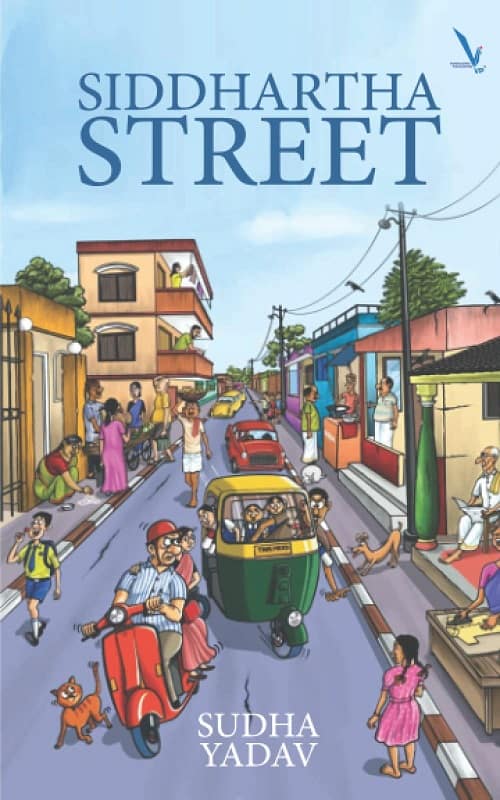
PLOT: 3.5/5 CHARACTERS: 3.5/5 CLIMAX: 3.5/5 WRITING STYLE: 3.5/5 ENTERTAINMENT QUOTIENT: 3.5/5
Sudha Yadav’s Siddhartha Street is a collection of short stories, or rather, perspectives from the perspective of different characters living in the same neighborhood.
Set on a fictional street called Siddhartha Street, in a place in southern India, this book is a moving, moving and moving reading, a moving, moving and moving reading about the lives and times of people living next to each other, but a version of life, being and belonging which shares so different.
The book is a collection of 10 short stories that make for a good read. These stories revolve around the different characters who live on this particular street and work on how their lives relate to each other.
Despite their similarity in living standards, and their representation of the middle and lower-middle class population, their personal lives are completely different.
Not everyone can own their home on this street. Some run stores and others are tenants. Each shares an individual reality that differs from the reality of another or even from the collective social reality of being a neighbor and neighbor of the same neighborhood.
Characterization is the key to keeping pace with storytelling and making it easier for the reader to transition from one story to the next. The different characters come together and separate at the same time in the simultaneous movement of the wheel of chance, which quickly rotates and creates new scenarios.
This brings out the nuances of the life they are living, as well as the way they are caught in the web of their circumstantial disorder. This makes the characters look like puppets in the hands of life.
Life takes a sudden turn and these characters take in different directions what makes their existence, and live from the daily grind of life, as an unpredictable experience.
However, it is through these fears and longings that it becomes a daily routine that brings out the everyday aspect of their lives.
Of all the characters, the street itself is the protagonist. It seems to be full of activity during the day and at other times of the day it appears calm and serene. However, the street itself is a witness to their growth, their dreams, their desires, their daily routine and their final demise.
In addition, each character is given their own space to develop, although a large number of characters call for filling in the text and reading it carefully. The sheer number of characters is marked by the uproar of boredom and the severity of their existence.
This does not mean that the street is full of boredom or monotony. His different moods are reflected in his different moments.
This is also quite often seen, for example, in the story ‘Earlier’, where the reader is taken to the past to report the unfortunate events of Sunday, filled with violence and loss of innocence. .
Each story is a reflection of the existential despair that the characters experience in terms of the morality they convey. However, the stories are the most passionate reflections of life and life, and not didactic pieces, torn with a deep authorial philosophy.
This makes the book Siddhartha Street a soft attitude towards neighborhood relations and their importance, which is rarely realized. However, it does not go too deep and loses focus on the evolution of events, but it maintains a moderate rhythm in each story, through moralization, to give a beautiful view.
It is noticeable at the end of the stories that will leave the reader in a confused but deeply moved emotion. These surprise endings add to the divisiveness of the entertainment and hold on to the unpredictability of the argument that runs parallel to the unpredictability of life. This also gives the stories a sense of circularity.
The writing style is easy to follow. Most of the story follows a conversational mode where the characters are given their own voice. The language is simple but he often uses his speech. These colloquial words give a rural touch to the heartwarming stories of humble people caught walking around their different realities. This radicalism is the charm of the stories.
The reader can get a sense of the experiences of the characters in the inspiring rural descriptions sambhar or an exotic scent argumpul disgusting juice or smoke beedi. This immediately leads the reader to RK Narayan’s Malgudi, based on similar topics and earthly descriptions.
The colorful cover of the book is beautifully done. The connection between the inner stories and the characters as neighbors and as friends living in the same neighborhood is very significant. This is highlighted by the attractive cover.
Can’t wait to read it? Buy a copy of Siddhartha Street using the link below.






